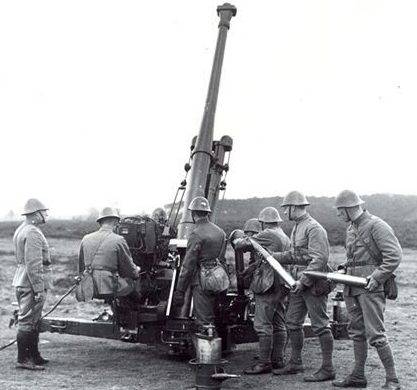For those who don't know what I am talking about, the P 26/40 was Italy's WW2 'heavy tank' that came too late to make any important contribution to the war, ending up post armistice as turret-bunkers. In truth, the tank was more comparable to a Panzer IV G, Sherman M4A1, T-34 1940 etc. than any heavy tank.
Now, I know that this type of scenario, in which you snap your fingers and suddenly X nation gets Y vehicle Z years earlier, somehow, has the problem of, well, going through the steps that lead to said vehicle being needed or being able to exist... and I have a justification for why this tank could exist/the conditions that it might allow it to exist.
Let's suppose that in 1936-37 after the Souma S35 entered service, the Italian military got their hands on some detailed photos of the tank and grew concerned at its capabilities. (40 km/h speed, 47 mm armor, 47 mm anti-tank cannon etc.) After all, France is Italy's rival at this point in time so it makes sense for them to watch what the French are doing and by chance or not, Mussolini ends up very much not impressed when he sees the new Italian 'medium tank' being built by Ansaldo compared to the already in production French S35. As such, he ends up asking for a better armored, armed and plainly more powerful tank than the S35, one that can fight said tank at 1 kilometer (usual range of the day).
While I don't see this having any major impact on the war, I wonder if it might have an impact on some battles in North Africa or in Italy in 1943.
Another thing to consider is that the P 26/40 offers a more easily upgrade-able platform than the M13-15 series of tanks, which, I think, post 1941 would receive a 3 man turret with the more powerful 75/46 cannon that is comparable to the PaK 40 and perhaps more armor (up to 80 mm compared to the 50 like the Panzer IV H?)
(And for those who will ask, what doesn't get build I would lean towards the M13 'medium tanks' as, by the time they finished the P 26 and M 13, the Italian military will easily notice how every other country is building bigger, more armored and faster 'medium tanks' and 'heavy tanks' - Cruiser Tank Mk IV, Panzer III & IV, M2A4 Stuart - Perhaps they will go for an earlier M16/43 cruiser tank in 1941)
Now, I know that this type of scenario, in which you snap your fingers and suddenly X nation gets Y vehicle Z years earlier, somehow, has the problem of, well, going through the steps that lead to said vehicle being needed or being able to exist... and I have a justification for why this tank could exist/the conditions that it might allow it to exist.
Let's suppose that in 1936-37 after the Souma S35 entered service, the Italian military got their hands on some detailed photos of the tank and grew concerned at its capabilities. (40 km/h speed, 47 mm armor, 47 mm anti-tank cannon etc.) After all, France is Italy's rival at this point in time so it makes sense for them to watch what the French are doing and by chance or not, Mussolini ends up very much not impressed when he sees the new Italian 'medium tank' being built by Ansaldo compared to the already in production French S35. As such, he ends up asking for a better armored, armed and plainly more powerful tank than the S35, one that can fight said tank at 1 kilometer (usual range of the day).
While I don't see this having any major impact on the war, I wonder if it might have an impact on some battles in North Africa or in Italy in 1943.
Another thing to consider is that the P 26/40 offers a more easily upgrade-able platform than the M13-15 series of tanks, which, I think, post 1941 would receive a 3 man turret with the more powerful 75/46 cannon that is comparable to the PaK 40 and perhaps more armor (up to 80 mm compared to the 50 like the Panzer IV H?)
(And for those who will ask, what doesn't get build I would lean towards the M13 'medium tanks' as, by the time they finished the P 26 and M 13, the Italian military will easily notice how every other country is building bigger, more armored and faster 'medium tanks' and 'heavy tanks' - Cruiser Tank Mk IV, Panzer III & IV, M2A4 Stuart - Perhaps they will go for an earlier M16/43 cruiser tank in 1941)
